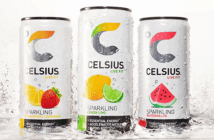By Fiona Acheson, head of food, beverage, and consumer goods at NZTE
When you are looking at exporting your delicious food and beverage products, what attributes might consumers in other markets be most attracted by, and do these attributes differ by market? Do some attributes attract a higher premium than others?
NZTE partnered with global research and insights company Kantar to ask these questions. The aim was to identify key consumer purchase drivers for food and beverage products, supported by insights into behavioural and emotive needs of the primary household shoppers. The online survey examined what’s driving purchases within eight different food and beverage categories and 29 sub-categories, including meat, fruit and vegetables, dairy, seafood, alcoholic beverages, non-alcoholic beverages, sweet snacks and vitamins, minerals, and supplements/mānuka honey.
The research, carried out in January and February this year with shoppers in Australia, China, Singapore, Japan, the US and the UK, identified eight key attributes driving the purchasing decisions of shoppers — tasty, affordable, healthy, fresh, ethical, trusted brand, safe product and on-trend.
It identified five key paths that companies could take to capture a premium: ethical, on-trend, health, safe product, and trusted brand. However, these vary depending on the market and category, so how businesses construct and communicate their offer needs to be tailored.
For example, China is influenced by health and safety; Japan by health, taste, and freshness; Singapore contains a broader spread of drivers; while Western markets are more driven by affordability, taste, and trusted brand.
However, affordability and taste do not pull in a premium, whereas there is real potential for ethical and on-trend purchases to do so, particularly in the US. For example, these drivers combined makeup 23% of share of occasions in the US, but in terms of the value it delivers, this jumps to 45% with similar premiums seen in other markets for these segments, suggesting these segments can command a premium. On the flipside, in Australia for example, tasty and affordable drivers combined makeup 40% of the market but only deliver 23% of the value.
Other interesting insights included that focusing on organic trends and being authentic with sustainability credentials isn’t the only way to deliver premium potential. Leveraging health and safety qualities are also key. Taste is also critical to get right as if products don’t taste great, consumers won’t buy them – relying on messaging around taste alone does not deliver a value add, it’s simply something F&B products need to deliver on.
These reports explain what values drive shoppers to buy particular products, which channels they shop at, and which occasions they shop for, so you can build this into your business decisions. You can view the reports here on myNZTE (registration/login to myNZTE is required to access these reports. myNZTE is our free online portal for businesses, containing over 700 food and beverage articles to help you navigate your export journey).
Fiona leads NZTE’s Food and Beverage Customers team. She has held roles as NZTE regional director for Greater China, NZTE investment director on the government’s cross-agency investment taskforce, and has also been trade commissioner in Guangzhou and for Malaysia, Indonesia, and Brunei. She has also supported leveraging activities around New Zealand – China free trade agreement and led leveraging programmes around the ASEAN–Australia–New Zealand and Malaysia–New Zealand FTAs.
The information and opinions within this column are not necessarily the views or opinions of Hot Source, NZ Food Technology, or the parent company, Hayley Media.





























































































